
Claude Monet: impressionism at Saint-Lazare Paris
Claude Monet: impressionism at Saint-Lazare Paris
An ambassador of art
The famous painter Claude Monet is certainly among the greatest artistic ambassadors and is considered a symbol of French art. His personal story is just as fascinating. He was born in the mid 19th century, in 1840, at the end of the industrial revolution and at the advent of the railway system. After initially starting a career in caricature, he left to study painting in Paris in 1859. His studies were interrupted by his military service in Germany. In 1862, he developed pleurisy. During his illustrious career, he met and befriended great artists such as Charles Gleyre, Alfred Sisley, Auguste Renoir and Frédéric Bazille. After several years of studying in the country, he settled in Paris in 1877 to study industrial progress and revolution and illustrate them on canvas. In 1883 he moved to Giverny with his partner and 6 children, where he painted his legendary canvas: Water Lilies. To visit Giverny, simply take one of the direct lines from the Gare Saint-Lazare to Normandy . The artist can now be found in many easily accessible museums and exhibitions in Paris, in France and throughout the world.
shopping in a tableau by Claude Monet
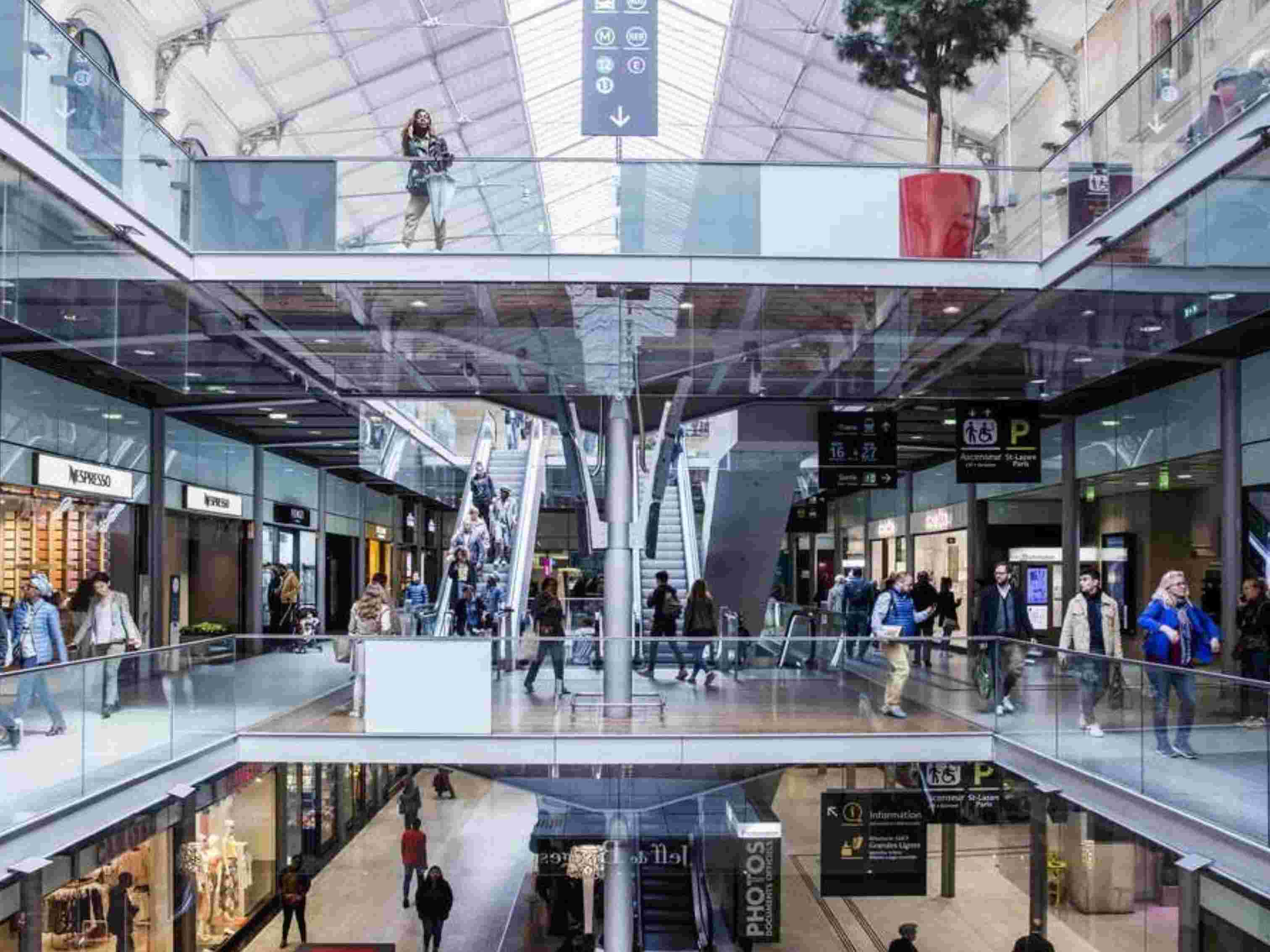
Why not immerse yourself in one of Claude Monet’s paintings for a shopping trip? Indeed, the artist painted several canvases on the Gare Saint-Lazare, and in 1877 he took up residence nearby, visiting the station every day to explore its themes and reproduce this world through paintings and technique. The shopping centre was installed in the station in 2012. It is open every day and boasts more than 80 shops and restaurants; visitors can enjoy a shopping trip in a building listed as a historic monument. You can enjoy a special shopping experience in a place that combines art, culture and heritage. It’s a new way to experience Paris and relive moments of the past as if you were there, and discover an extraordinary history
arts and the station
Growing up in the prime of the industrial revolution and emergence of the railways, Claude Monet, like other artists, decided to record this story on canvas. The result was a series of 12 iconic works, now exhibited in museums, exhibitions and galleries all over the world. These paintings tell of the rise of the railway in the mid-19th century. The most well-known painting, “La Gare Saint-Lazare”, is now displayed in the Musée d’Orsay. Prime locations such as the Musée de Giverny, Musée des Impressionnistes, and Musée d’Orsay reveal secrets of the artist and his canvas paintings. The end of the 19th century was marked by a rapid development of railways in Europe, transforming cities and ways of life. The Gare Saint-Lazare in Paris was one of the main railway stations of the time, and the first in Île-de-France.
the 12 paintings of the Gare Saint-Lazare

Claude Monet
La Gare Saint-Lazare
In 1877
Oil on canvas
H. 75.0; L. 105.0 cm.
Musée d’Orsay, Paris, France
© Musée d’Orsay, Dist. RMN-Grand Palais / Patrice Schmidt
The canvas was also favoured by another painter of modern life, Gustave Caillebotte, who acquired it in 1878, in spite of the styles of the two artists often differing: Monet’s preference was the effect of colour and light, while Caillebotte is instead known for more precise workmanship.
Property of the French State since 1894 as a bequest from Gustave Caillebotte to the National Museums, the paintings were successively awarded to the Luxembourg Museum in 1896, the Louvre in 1929, and the Musée d’Orsay in 1986.

Claude Monet
La Gare Saint-Lazare et l’arrivée d’un train
In 1877
H. 83.0; L. 101.3 cm.
Fogg Art Museum, Cambridge, United States.
© President and Fellows of Harvard College
Painted in 1877, it is the largest in the series in terms of size.
He would work on several paintings at the same time, and would sometimes press the stretched canvases against each other while the paint was still wet.
This caused the cork spacers on the back of the frames to sink into adjacent paintings, creating circular indentations on the surface that can still be seen along the top edge.
The dense accumulation of pigments is an excellent example of his approach to painting at that time, when he would juxtapose a multitude of shades in mounds of impasto that would not blend into a coherent whole when viewed from a distance. This technique led Cézanne to claim: “Monet is only one eye, but good lord, what an eye!”
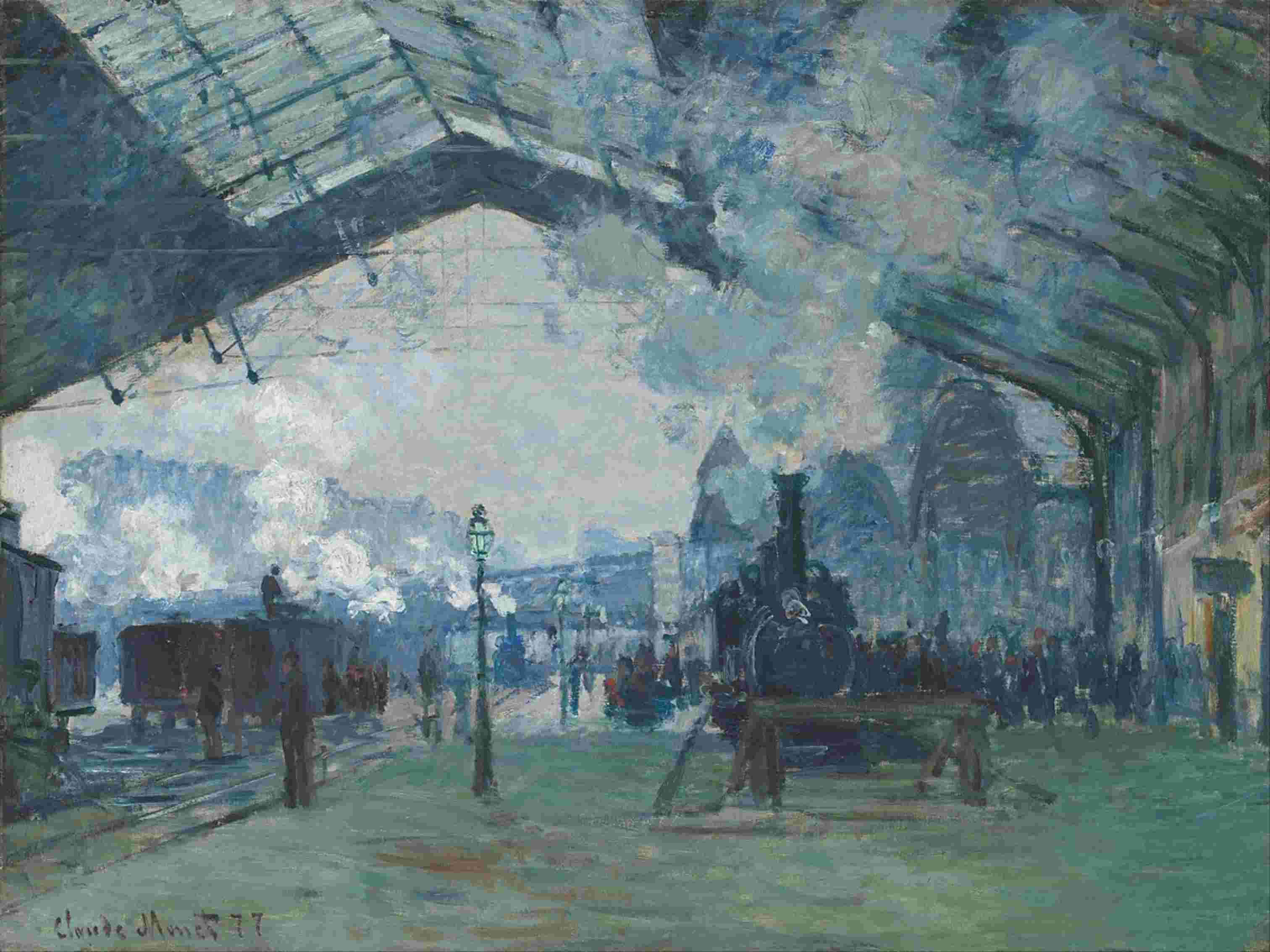
Claude Monet
La Gare Saint-Lazare, arrivée du train de Normandie
In 1877
H. 60.3; L. 80.2 cm.
The impressionists often paid tribute to modern aspects of Paris. Their paintings are filled with scenes of grand boulevards and elegant new building blocks, modern constructions such as iron bridges, exhibition halls and railway sheds.
The artist chose to focus on the glass and iron shed, where he found an attractive combination of artificial and natural effects, with the steam rising from trains framed by the structure and the daylight.
In 1877, eight of the twelve known oil on canvas paintings were left incomplete. This canvas was completed in time to be unveiled at the third impressionist exhibition that same year.

Claude Monet
La Gare Saint-Lazare
In 1877
H. 54.3; L. 73.6 cm.
National Gallery, London, United Kingdom
This legendary place was also the starting point for many key sites of Impressionism in western Paris.
This canvas is considered one of the least accomplished, but also the most freely painted. The artist stationed himself at the terminus of one of the main lines, which provided a bird's eye view of the platforms. In the foreground, two locomotives are enveloped in steam, and surrounded by passengers who are probably waiting to board.
The dark, angular lines of the roof beams contrast with the random patterns formed by the smoke. By including the closed roof at the top of the image, the artist breaks with techniques conventionally used in landscape painting. Light and clouds that would normally be associated with the open air are captured inside a decidedly modern structure composed of glass and iron.
If we look at the scene in another way, contrasts can be observed between old and new, nature and industry. The bold, innovative representation of this space that symbolises modernity highlights the characteristic elements of Impressionism, for example the play of light, atmospheric effects and spontaneity of the brushstroke.
This painting is an indication of Monet’s singular vision and desire to push the limits of artistic representation by capturing the very essence of a unique, modern location.
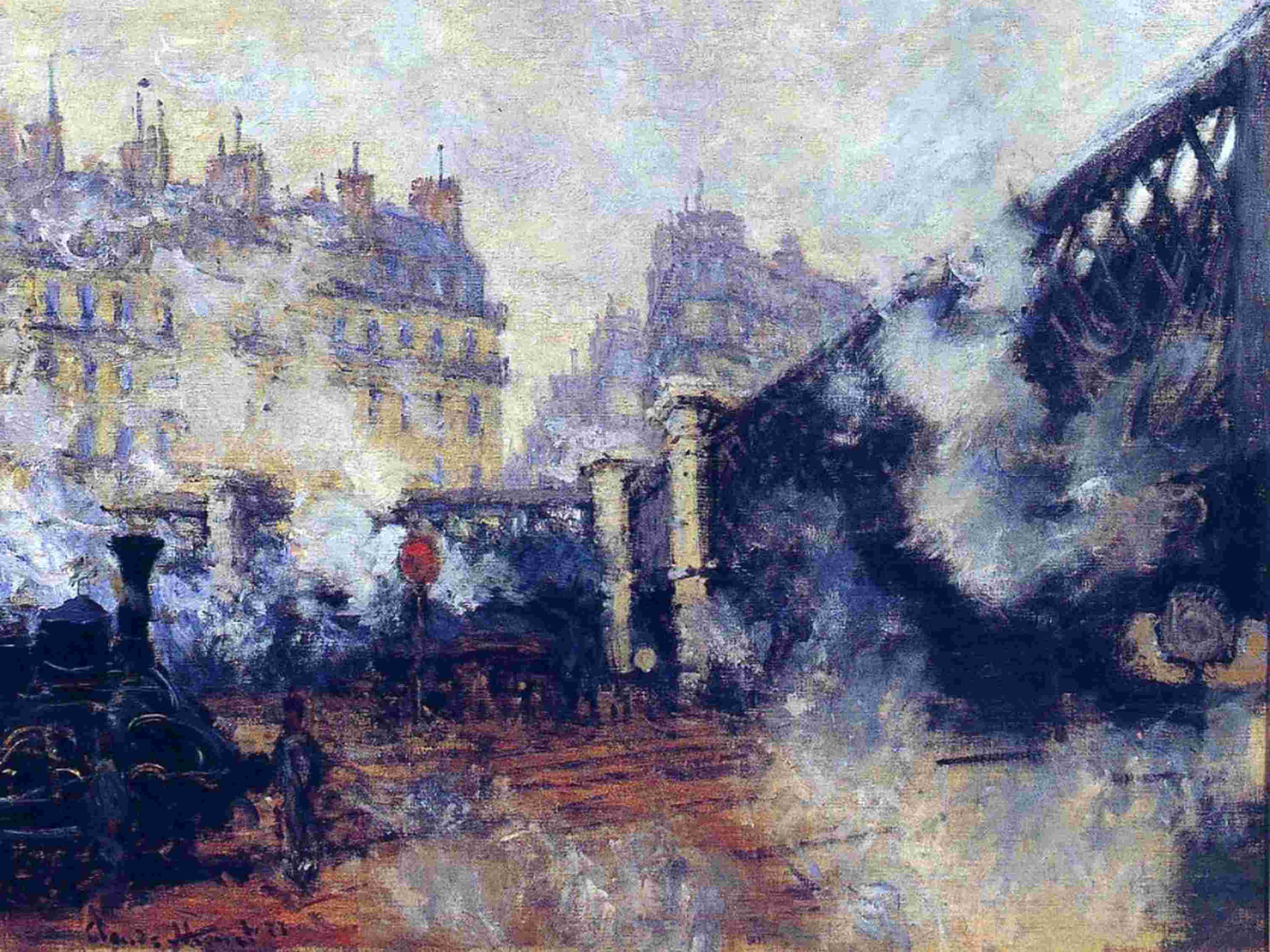
Claude Monet
Le Pont de l'Europe, gare Saint-Lazare
In 1877
H. 65; L. 81 cm.
Musée Marmottan Monet, Paris, France.
This painting represents the surroundings of the station, with the buildings on the Rue de Rome and the Pont de l'Europe, a viaduct built in 1863 that no longer exists today.
The artist set up his easel below the viaduct and used the diagonal line formed by the aqueduct to structure his composition. The bridge therefore appears in the foreground; the train, railway worker and signpost are reduced to mere details. Monet also strove to recreate the distinctive atmosphere of the place by painting the elusive ballet of smoke emanating from the steam engines.
In this canvas, he emphasises the architectural features and the fleeting movements that make up everyday life. The painting demonstrates the artist’s fascination for industrial scenes while it also highlights the atmospheric effects and play of light typical of the impressionist movement
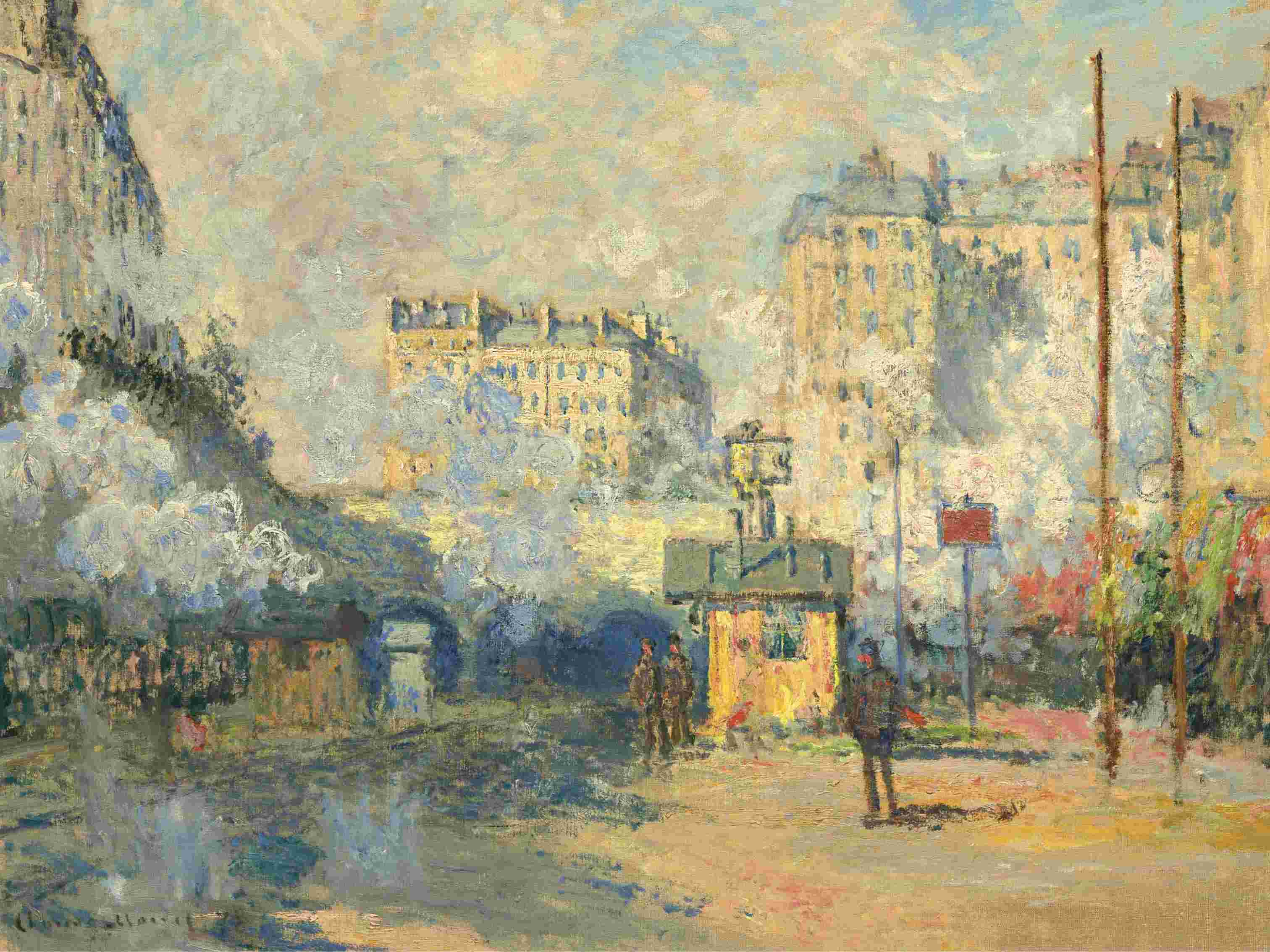
Claude Monet
Extérieur de la gare Saint-Lazare, effet de soleil
In 1877
H. 60; L. 81 cm.
Private collection
In this painting, the artist captures a specific moment of the day, when the sun lights up the outside of the Gare Saint-Lazare. He focuses on the effects of sunlight on architecture and the urban environment. The bold use of colour and rapid brushstrokes give a sense of the vibrant, changing atmosphere of the scene.
This work presents a juxtaposition of light and shade, creating a striking play of contrast. One notices the use of warm, bright hues to represent areas bathed in sunlight, while shadows are rendered with darker, colder tones. This creates the impression of depth and movement in the composition.
The emphasis is on the architectural aspects of the station. The pillars, arcades and details of the building are represented with rapid strokes and splashes of colour, giving an impression of excitement and modern life.
As can be seen, particular attention is paid to atmospheric effects. The smoke escaping from the locomotives and chimneys creates shades and textures in the sky, adding further dimension to the composition.
The painting is representative of the impressionist style, with the emphasis on sensation and capturing the moment. He is seeking to express the atmosphere and emotion of the scene rather than the precise details. This painting demonstrates his interest in urban landscapes and his skill in depicting the effects of light and colour.
By using vibrant colours, rapid brushstrokes and bold composition, the artists successfully captures the very essence of the scene and creates an impression of contemporaneity and movement.

Claude Monet
Extérieur de la gare Saint-Lazare, arrivée d’un train
In 1877
H. 60; L. 72 cm.
Private collection
The canvas is a painting that plunges the viewer right into the hustle and bustle of a station at its busiest time. We feel the dynamic atmosphere of the scene through the use of rapid brushstrokes and vibrant colours. The shapes are outlined rather than detailed, giving a sense of movement and fluidity.
In the foreground, the arriving train immediately catches the eye. The smoke escaping from the locomotive mingles with the surrounding clouds. The characters on the platform, travellers and railway workers are represented in cursory fashion, but their postures and gestures reflect the frenetic activity of the place.
This work demonstrates the ability to represent modern life in all its vitality and to convey visual impressions using a unique, innovative style.
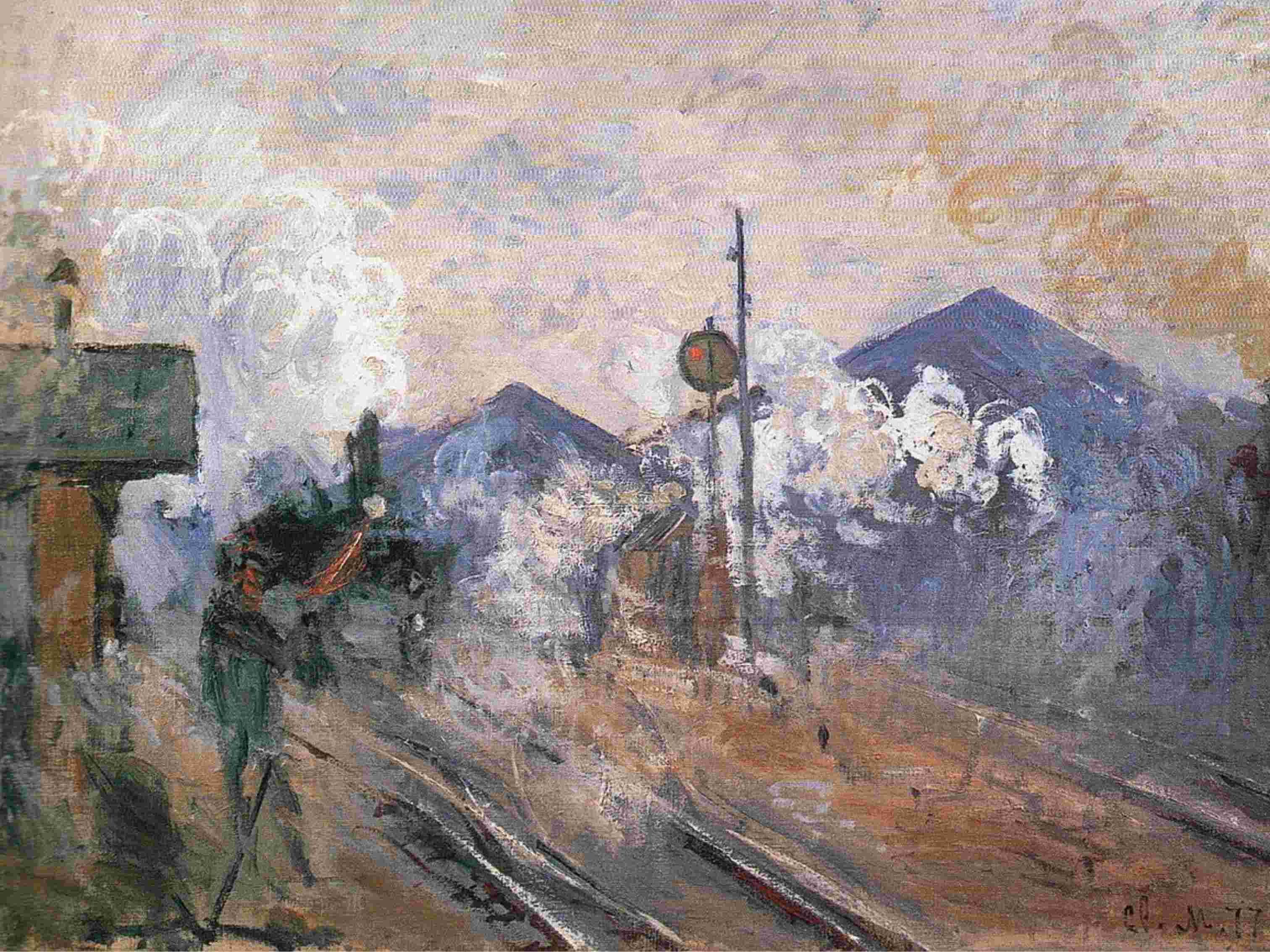
Claude Monet
Les Voies à la sortie de la gare Saint-Lazare
In 1877
H. 60; L. 80 cm.
Pola Museum of Art, Hakone, Japan
The work represents the railway tracks at the exit of the station. Again, we see the use rapid, vivid brushstrokes typical of impressionism.
To appreciate the dynamism of the scene, pay attention to the lines of railway tracks and switches that converge towards a vanishing point, creating a sense of depth and perspective. The surrounding metal structures and buildings are depicted in a simplified manner, with splashes of colour that merely suggest their presence.
The colour palette is bright and varied, reflecting the different tones of natural light. He captures the reflections on the rail tracks and changes in colour caused by the interplay of shadow and light. The general feel of the painting is animated, evoking the ceaseless activity of a railway station.

Claude Monet
La Gare Saint-Lazare, vue extérieure
In 1877
H. 64; L. 81 cm.
Private collection
This work presents a dynamic, lively scene in this well-known Parisian station. On the left of the image we see some of the buildings surrounding the station, adding an architectural dimension to the composition. In the foreground, splashes of vivid colour draw the attention, creating a sense of movement and life. The arriving locomotive takes centre stage in the scene, capturing the essence of railway activity.
Light plays an essential part in the work. We notice the use of luminous strokes to represent light reflecting off the metallic surfaces of the trains and surrounding buildings. In addition to these details, we also observe characters and travellers that animate the scene, introducing a human touch to the railway environment.

Claude Monet
La Gare Saint-Lazare, vue extérieure
In 1877
H. 60; L. 80 cm.
Private collection
The canvas is painted in layers, which emphasises the warehouses in this symbolic part of the Parisian station. In the foreground, animated characters move around in front of the warehouses, creating an atmosphere of movement and life. The converging lines of the railway tracks draw the viewer’s eye towards the background, where the warehouses are represented by simple metallic structures and splashes of dark colour that reflect their industrial nature.
The subtle play of shadows and tonal variations add realism and depth to the scene, capturing the distinctive ambience of this environment. The artist attempts to seize the animated essence of the Gare Saint-Lazare as a symbol of the booming industrial period, offering a unique, dynamic, impressionistic depiction of this urban environment.
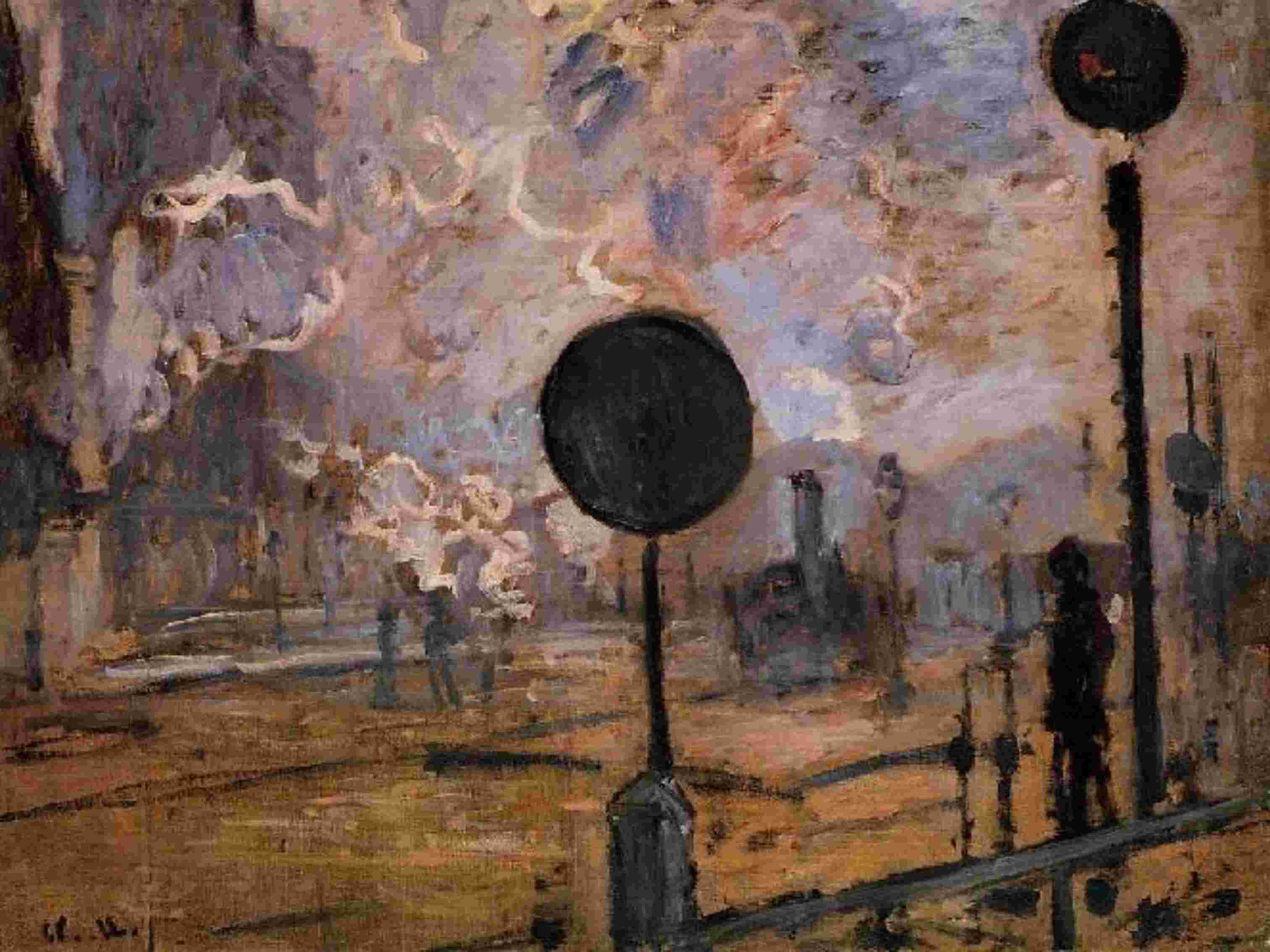
Claude Monet
La Gare Saint-Lazare, les signaux ou Le Signal
In 1877
H. 65; L. 81 cm.
Lower Saxony State Museum, Hanover, Germany
In the foreground of this work, one is presented with a close-up view of the railway signals and rails. He uses vibrant, contrasting splashes of colour to represent the signals, which stand out in sharp contrast to the rest of the scene. The colours used in this case are primarily shades of red, yellow and orange, creating a dynamic, energetic feel.
The second layer of the work shows thick smoke emanating from trains leaving the station. This time, we observe the use of lighter, more delicate splashes of colour, particularly the pinkish shades that represent clouds of smoke. These shades help create an atmospheric aura and give the impression of movement and levity in the scene.
Further away still, we see the roofs of the station. These contrast with the brighter colours of the foreground, creating a smooth transition to the deeper layers. The artist uses shades of pink, violet and pale grey, to reflect the enveloping atmosphere of the station and its urban environment. These colours also convey the ephemeral quality of light and air in a busy urban environment. 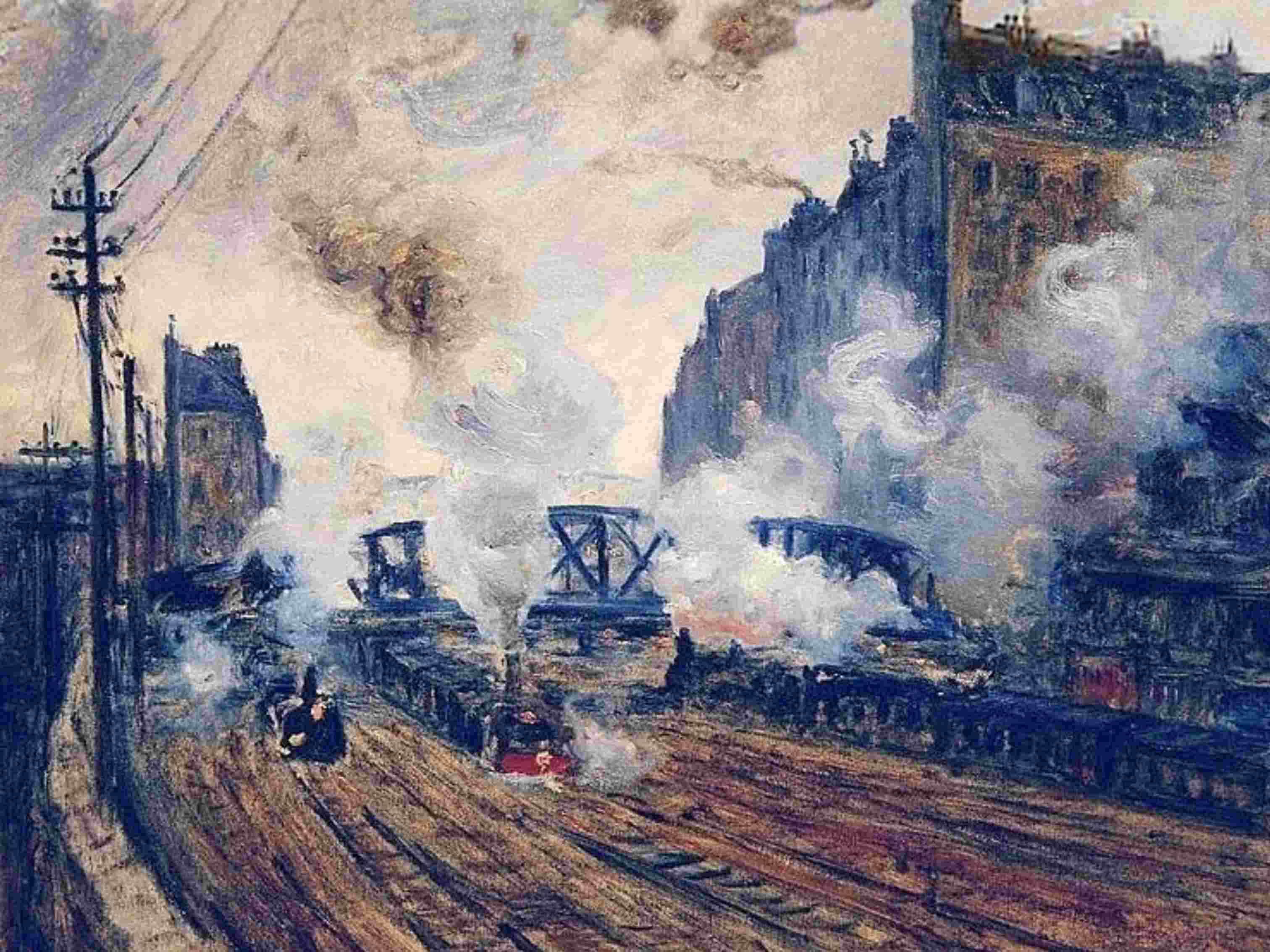
Claude Monet
La Tranchée des Batignolles
In 1877
H. 38; L. 46 cm.
Wurth Collection, Rome, Italy
